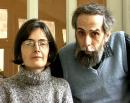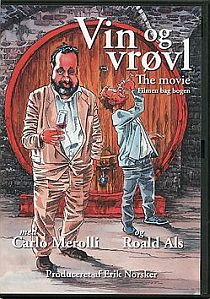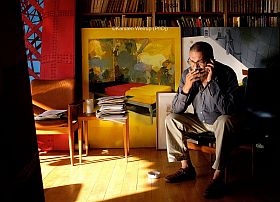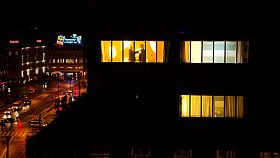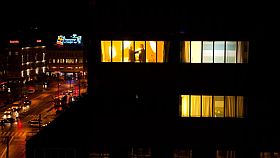Jeg er dokumentarist, understregede Ulla Boje Rasmussen forleden, vi talte om hendes nye film, og der var noget der, som er vigtigt for hende. Hun er i den anstrengende slutfase af arbejdet med en stor film om en berømt (og nu vist også berygtet) islandsk slægt. Hun forsvarede sin detailinteresse for alt det faktuelle derude, hvor virkeligheden er, forsvarede den over for en interesse, måske hos klipperen, måske hos forfatteren, for filmens konstruktion, over for den virkelighed, som findes derinde, derinde i filmen. Jeg tror Ulla B R bekymrede sig for sandheden i den sidste virkelighed og mistænkte filmkonstruktionen for at forråde den til fordel for sin egen, som var fiktion. Hun tøvede så gribende med at forlade én virkelighed for at ankomme til en anden. For hvad med sandheden?
I 1990 instruerede hun den vidunderlige film 1700 meter fra fremtiden om dagliglivet på det færøske sted, Gásadalur. Og i filmens katalog beskæftiger Mogens Rukov sig med denne sandhedens forvandling, som han ser det er. Som filmen og ikke den journalistiske tv-reportage kan.
”Vi er i en lille bygd på en stor ø i Færøerne, nogle kilometer fra en større by (indkøbsstedet), adskilt fra den af et højt fjeld, en flere timer lang vej, en bygd med kun 16 indbyggere i en klynge huse, deres får og kvæg, græsgangene, klipperne, havet.
Det kan ligne en almindelig dokumentarfilm. Men det er det ikke. Den er sær, skæv, uden at gøre opmærksom på det, uden at blive påtrængende som form, alligevel anderledes struktureret.
Det kunne have været en reportage. De 1700 meter fra fremtiden er et reportageemne. Det drejer sig om en tunnel, der måske/måske ikke bliver anlagt som forbindelse til den større by. Men det er kun en maske, noget, der foregives, der spilles med. Formen er dybere. Reportagen går i stykker, gennemhulles af den virkelighed, hvori den finder sted. Man kunne tale om en ustandselig distraktion mod det virkelige, menneskene og deres historier.
Færøerne bliver en realitet. Ikke genstand for en problembehandling eller folklore, (sådan som det hidtil har været for mig for eksempel med fiskeriproblemer, geologiske formationer indlært i skolens 7. klasse, grindedrab og kædedans.)
Anderledes i filmen. Her er det hele. Også det unævnte, midt i en hverdag, der er helt samtidig og dog så forskellig fra den industrialiserede hverdags samtidighed.
Det er en virkning, der kun er opnået som følge af en lille magi, hvis opskrift egentlig er ganske simpel, men som er utrolig vanskelig at følge, som kun sjældent forsøges, og som søger en sandhed, der ligger bagved det tilgængelige. Den er dybt præget af kærlighed. Den vil ikke noget bestemt (hvad der er en del af kærlighedens væsen, en form for hengivelse, en anerkendelse af genstandens egen fænomenologi) og kommer derved til at handle om selve eksistensen…
… Ét sted i filmen dukker formens trivialitet frem og bliver til svaghed. I slutningen. Det er, som om filmskaberne er blevet febrilske. De begynder at fortælle den reportage, som kun var maske og struktur, den 1700 meters tunnel. Man laver voxpop,lader radioen tale som reporternes kommentar. Det er, som om noget urent opstår, en tribut til publikums forventning om det sædvanlige og trivielle. Mange vil nyde det. Det vil give publikum sikkerhed. Det gør formens trivialitet som oftest. Men det er et øjeblik af sjælløshed, der egentlig kun bør afsløre, hvilket usædvanligt billedrum filmen i øvrigt har bevæget sig i… ”
Nu,mange år efter ude i den virkelige virkelighed er tunnellen for længst bygget. Ulla Boje Rasmussen har været meget optaget af det. Hun er jo dokumentarist. Hun har fotograferet det. Skildret situationen i husene derude, blandt menneskene der. Jeg vil hævde, at det ikke har med den eksisterende film at gøre. Ja, at oplysningen er ødelæggende. Dens præmis, som den lever på som film, er at den tunnel ikke er der som andet end drøm. Den nye viden lagt på som oplysning ville gøre filmen usand. Bergman har et lignende problem med sin Fårö-film.
Men som med Calvinos by Maurilia findes en anden færøsk bygd med det navn Gásadalur. En bygd som ved en tunnel er blevet en slags forstad til en større by, som er indkøbssted. Om denne bygd har Ulla Boje Rasmussen lavet en reportage. Den gamle film fremstiller ikke Gásadalur, som den var tidligere, men en anden bygd, der tilfældigvis hed det samme. Forklarer Italo Calvino.
Mogens Rukov konkluderer sin tankevækkende prolog ved at svinge sig helt op – det tør han, og det kan han tillade sig – og fremhæve filmens auteur:
“… Som altid når det særegne er på spil, erindres publikum om den skabende bevidstheds unikke karakter. Der er i sidste ende én bevidsthed der er styrende. Hendes respekt er stor.”
Om hun er dokumentarist nævner han ikke, men i hvert fald er hun maler og digter. Det ser jeg af filmen.
Ulla Boje Rasmussen: 1700 meter fra fremtiden, DK 1990. Indhold: En topgrafisk skildring af den færøske bygd Gásadalur. Litt.: Mogens Rukov: Bygden i midten i Statens Filmcentrals programhæfte til filmen. Fotografi af Karsten Weirup: Rukov derhjemme.



